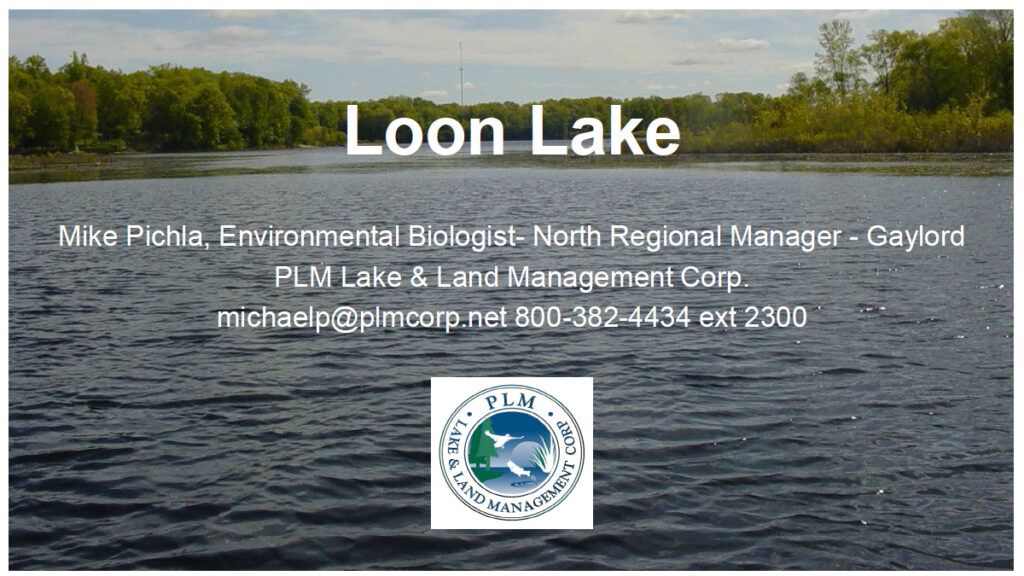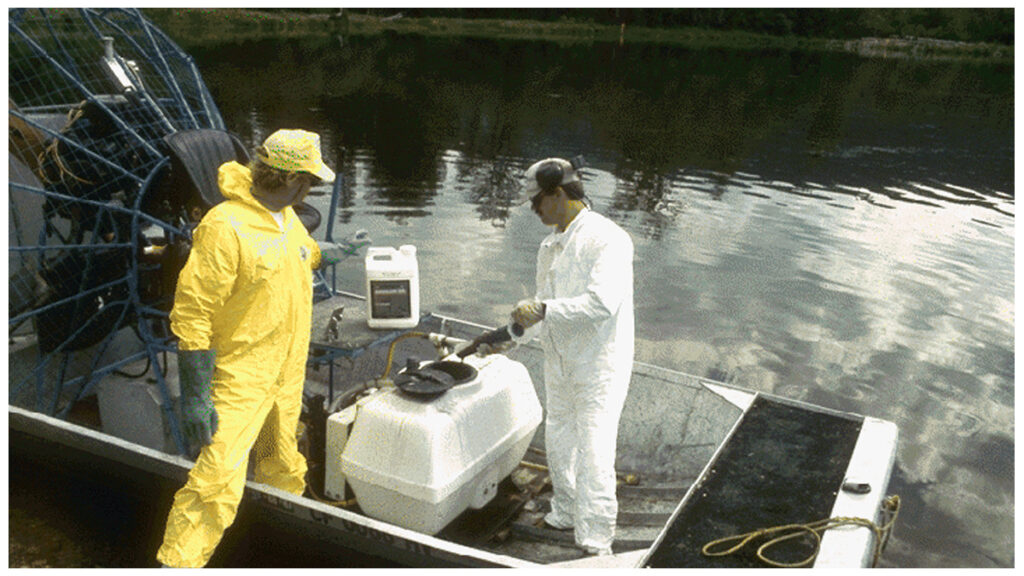May 25, 2024 – News from the Loon Lake Association Meeting
Members from our Loon Lake Conservancy team attended the Loon Lake Association (LLA) spring meeting on May 25th. We know that many of you are not LLA members and so we thought we would share what we view as some key points as well as the next steps the Conservancy will take.
Mike Pichla from PLM (the current chemical application company) presented the most comprehensive information sharing of their work on Loon Lake that our team has ever seen. Their presentation was beneficial in helping to understand today’s treatment. The presentation is linked below.
Highlights from the meeting:
- If you wish to not have your property frontage treated with chemicals this year, send an email to michaelp@plmcorp.net. Provide your address, a lakeside picture of your home and/or any identifying information that will help PLM avoid treating your frontage. Specify, ‘No algae or weed treatment on my property frontage in 2024’. Since native, beneficial plant species such as Large Leaf Pondweed, Misc. Pondweed species, and Wild Celery are regularly targeted by chemical treatment – even a small number of concerned property owners who refuse treatment could have a meaningful beneficial impact on vegetation cover for fish in Loon Lake! We would be happy to share treatment maps from the previous decade with you, if interested.
- PLM was not able to precisely identify the “threshold” for treating “native nuisance weed growth”. This continues to be of concern to us because it means that native vegetation will be killed based on a subjective evaluation by PLM.
- PLM offered no theories on why over 50% of our Survey Respondents reported a decline in the fishery. Likewise, no explanations were offered as to why many of us have observed numerous dead crayfish and a decrease in minnow, frog, and mud-puppy populations.
- PLM provided examples of what each property owner should do to minimize nutrient flow from our property into the lake. Keeping lawn clippings, bonfire ash, leaves and fertilizers (even phosphorus-free) away from the shoreline is critical. Essentially, we need to avoid practices that promote excess nutrient runoff into the lake, which can contribute to free-floating algae growth.
- The LLA distributed a paper titled “A Discussion to Address Your Concerns Will Herbicides Hurt Me”. As with any information you should critically review the author and their intent. In this case the author is the CEO of a compliance organization that states “Our clients include multinational firms and small and medium-sized enterprises striving to introduce new and keep existing products in the global marketplace”. In this case “products” are aquatic herbicides on which they offer a favorable viewpoint. The paper is linked below.
- A stocking of more mature walleye than the DNR plants is being investigated. The LLA is accepting donations for this stocking program.
Next steps for the Loon Lake Conservancy:
- We will contact representatives from Long Lake to better understand the history of their use of a Lake Ecology Consultant approach, the cost history, their response to why this approach is best, and how they implemented it.
- We will research and contact Lake Ecology Consultants who would be interested in servicing Loon Lake.
- We will investigate the cost of getting samples of fish flesh tested for toxin levels as well as the testing of sediment core samples for copper accumulation.
- We will investigate the creation of “artificial fish habitat” and report our findings back to you.

CLICK on the image to view the presentation made by PLM at the Loon Lake Association (LLA) Meeting on May 25, 2024 in Hale, Michigan.

CLICK on the image to open a paper on HERBICIDES distributed by the LLA at the Meeting on May 25, 2024. Note: The author is the CEO of a compliance organization that states “Our clients include multinational firms and small and medium-sized enterprises striving to introduce new and keep existing products in the global marketplace”. In this case the “products” are aquatic herbicides on which they offer a favorable view as would be expected.